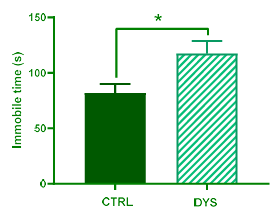A Mouse Model of Primary Dysmenorrhea-Associated Mood Disorder – A Preliminary Study
DOI:
https://doi.org/10.5530/ctbp.2023.4s.100Keywords:
Menstrual cycle, depression, anxiety, psychological wellbeing, preclinical modelAbstract
Primary dysmenorrhea, or painful menstruation, is known to affect many reproductively active females. Besides the chronic pain that affects daily well-being, the inflicted patients are exposed to a higher risk of developing mood disorders. Various clinical studies exhibited that patients with prolonged primary dysmenorrhea showed an elevated level of depression. To date, there’s no report on a representative model of primary dysmenorrhea-associated mood disorders. It is crucial for a new model to be present, as it will be a convenient tool for drug discovery. In the present study, employing an established mouse model of induced primary dysmenorrhea, we further examined the associated mood disorders via various behavioural tests, e.g., the open field test (anxiety-like behaviour), the tail suspension test (depression-like behaviour), and the social interaction test (anhedia). The findings showed that depressive and anxietylike behaviours were present in the primary dysmenorrhea-induced mice. Thus, this model has the potential to be further employed as a drug screening model for novel treatments for primary dysmenorrhea-associated mood disorders.



